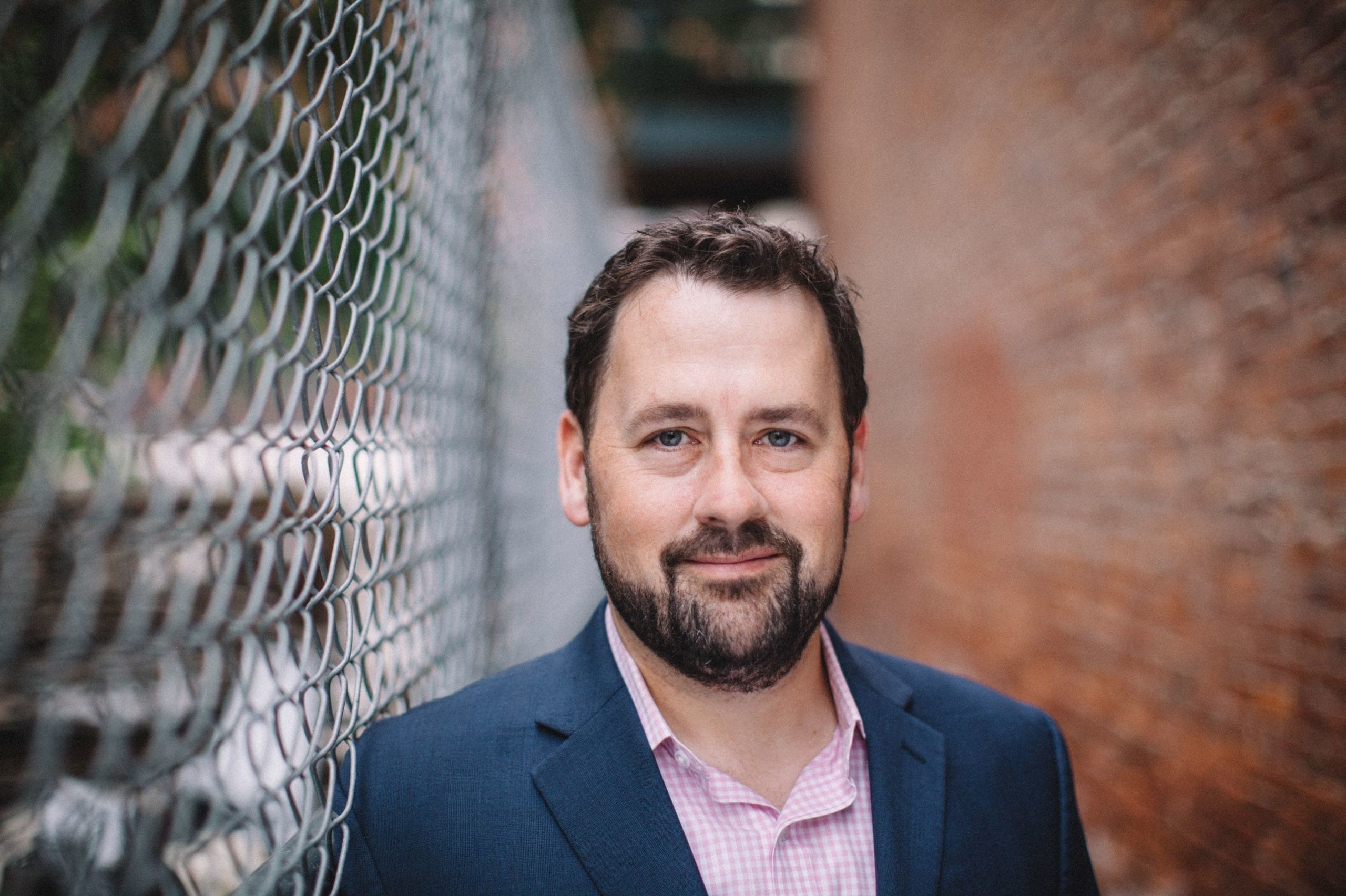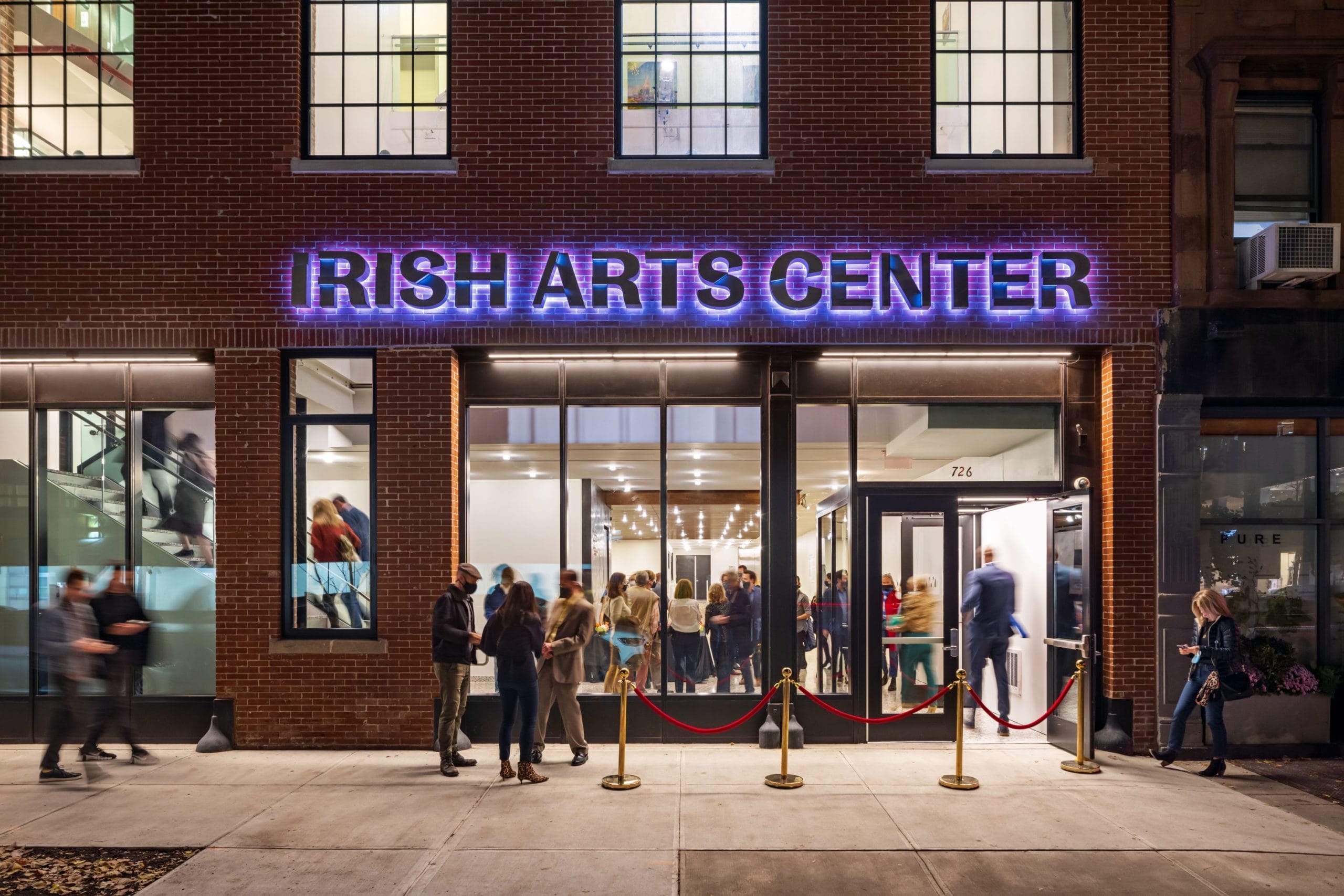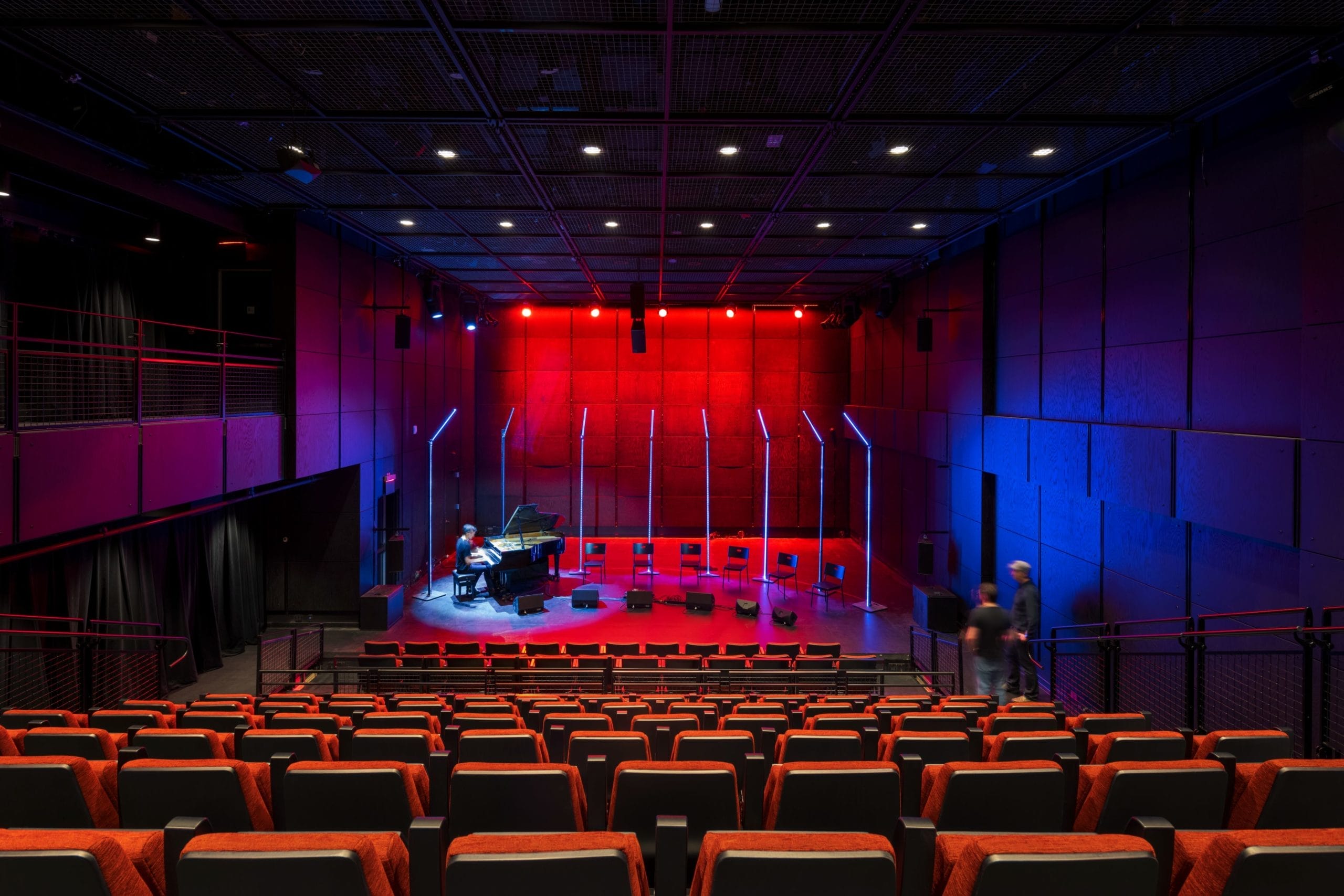Nearly half a century since its founding in 1972, the Irish Arts Center is expanding as a hub for Irish arts and culture in New York City with a new home. Previously housed in a former three-story tenement, the organization is opening the doors of its new 21,700-square-foot facility in Hell’s Kitchen on December 8.
For executive director Aidan Connolly WG12, this moment is the culmination of a roughly 15-year journey during which he led a transformation of the organization’s scope and mission, growing the center’s annual budget exponentially (from $690,000 in 2007 to more than $7 million this year) and raising over $60 million to develop the new building. Wharton Magazine spoke with Connolly about the facility’s opening, its role in strengthening Ireland’s global footprint, and how the skills he gained through Wharton’s Executive MBA program have helped along the way.
Wharton Magazine: In what ways will this new center allow your organization to expand in the coming years?
Aidan Connolly: The facility supports a multidisciplinary cultural program that is inclusive of theater, music, dance, visual arts, film, literature, family and community programming, and more. We’ve built a center for ideas that is like a hybrid of New York’s 92nd Street Y and the Brooklyn Academy of Music — a modern international cultural home for Ireland. We constructed a physical space for artists to generate exciting experiences that bring people of all backgrounds together, a main component of which is our new flexible theater that can house all different kinds of artistic practices. Within the theater, we’ve incorporated a retractable seating system, a wire tension grid that allows for efficient, flexible lighting and sound capability, and the ability to record and stream performances, all while preserving a sense of warmth and intimacy. We wanted to ensure flexibility in the facility’s spaces for how things might evolve over time so that new visions can be applied to them.
Since hospitality is such a core value in Irish culture and for our institution — it’s how we drive a contagious loyalty among artists, audiences, supporters, and stakeholders — we developed a café on the ground floor that received the same careful thought as the artistic spaces and allows us to show up in a welcoming way in what is essentially a residential neighborhood. We’re obviously operating in a wildly uncertain public-health environment and, therefore, economic environment, but also at a time when the need for togetherness has never been more pronounced. So there is great opportunity for us to play a role in New York’s cultural restoration and in the U.S.’s transatlantic relationship with Ireland.
WM: How did the pandemic inform the center’s construction, and how is it shaping the center’s future?
AC: One of the big challenges for our industry today is being proactively thoughtful in terms of scenario-planning — exercising appropriate humility in the conclusions you draw from today’s set of circumstances when making long-term decisions. The building was three-quarters of the way through construction when the crisis hit, so we endured a three-month halt in construction, in addition to supply-chain issues and other interruptions after construction resumed. Not to mention the fact that our primary day-to-day fuel is live events. Those are massive things to work through, but looking to the horizon, we were glad, for example, that we created a flexible theater as opposed to a fixed-seating theater, driven by a depth of understanding of where artistic practice was and seemed to be headed. And now, more than ever, the ability to shape physical environments to suit changing needs is key.
The pause in construction also gave us an opportunity to revisit air filtration in the building, based on early learnings during the pandemic. Many of those things were already accounted for in our development plan, but the delay in our ability to open gave our team additional time to ensure we felt good about all these components.
How things are fundamentally going to play out in our industry in a neo- or post-COVID world is unknown, but one key guiding principle we have honed in on is our ability to adapt.
WM: As a theater and concert artist earlier in your career, what led you to the business side of things?
AC: I look at my career in three chapters. First, I came out of undergrad as an English and theater major at Providence College, where I established a liberal arts underpinning that most essentially taught me critical thinking. I started out after college not really sure of what I wanted to do, and I had gotten some opportunities in the performing arts, so I decided to move to New York to give that a try. It was an enjoyable and relatively successful experience, but ultimately I knew there was more I wanted to do professionally. My first pivot was an opportunity to work on the Gore campaign in 2000, which led to chapter two: working on political campaigns and in government affairs.
When I joined the Irish Arts Center, it was about bringing together my interest in the arts and the skill set I had acquired working in campaigns and government. In fact, there’s an analogous relationship between political campaigns and the underpinnings of a successful nonprofit organization: Both are driven by an ecosystem of funders, media and opinion leaders, institutions, government and community entities, and an audience of some kind, all animated by a cause that feels important and sustainable.
As we began to really gain traction in our vision and strategy around the center, I learned about the Executive MBA program and discovered that I could get a first-rate MBA experience while doing my job that could be mutually reinforcing both for me and for the organization. It was a real “aha moment” that if I could put a floor under all the arts and culture and government experience I’d gained with a real discipline in business fundamentals, that would be great for the center and for me.
WM: Were there any specific skills that you aimed to pick up through the program?
AC: In retrospect, I had some notion of what those fundamentals would be at a brass tacks level — certainly, foundations around areas such as accounting, finance, strategy, and management. And that absolutely turned out to be the case, but at the end of the day, what became clear is that an MBA is really about frameworks, be it a strategy framework, risk-management framework, or financial-planning framework. Those frameworks can provide a heightened level of strategic focus and are ultimately game-changers in a mission-based environment, where you aren’t only focused on shareholder value, but on looking at things through multiple competing value-driving lenses.
As the “finance school,” Wharton may not be an obvious choice of business school for somebody who aspires to leadership in the cultural sector. But it’s hard to imagine a more directly applicable set of skills to the experiences that I’ve had in this job over the last decade. The lesson there is that sometimes the best choice is not the most obvious one.




























